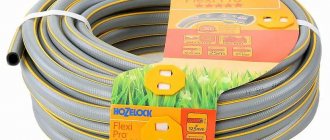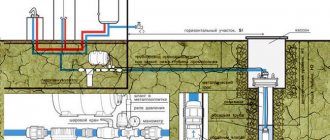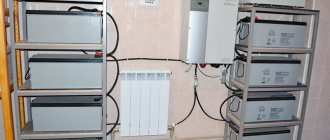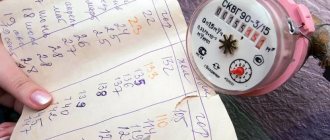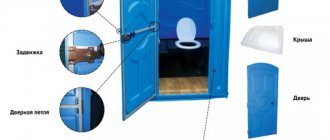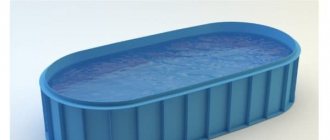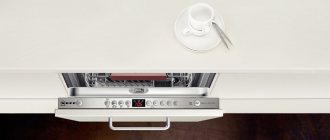Buying a pump to service a country house will save you from a lot of problems. Relatively inexpensive compact equipment will collect water in containers for irrigation and deliver it to the bathhouse, kitchen, or pond or pool equipped on the site. Agree, doing so many things manually is too difficult, and almost impossible.
Pumping equipment will easily perform all the work listed for you if all technical and hydrogeological nuances were taken into account before purchasing it. We are happy to help you understand this difficult issue. The article presented for review contains all the characteristics and circumstances necessary for making an informed choice.
The information we offer will help you thoroughly understand what you should pay attention to before purchasing, which pump is best for a well, and what needs to be provided for connection. We have listed the leaders in the production of pumping equipment for private purposes. The information is supported by video and photo examples.
Main types of submersible pumps
The main types of such well pumps include:
- vibration type;
- screw type;
- centrifugal type.
They all have their own design features, pros and cons. Without going into technical details, we note that in terms of quality and price ratio, vibrating-type water pumps for a summer house are the most balanced solution. Submersible pumps are lowered directly into water, in particular into a well.
It is worth noting that the vibration well pump is the least susceptible to maintenance conditions. The main thing that will need to be done is to purchase an external filter for the pump, since, as a rule, they are not equipped with their own. Otherwise, these are productive and reliable units.
Sectional view of a vibration pump Source oboiman.ru
How much does it cost to lay a winter water supply system per 1 linear meter?
installs water supply in:
— Moscow and Moscow region.
— St. Petersburg and Leningrad region.
The cost of laying a pipeline that can be used in winter depends on the region: in St. Petersburg the price of this service is 1000 rubles per linear meter, in Moscow - 1300 per linear meter. The difference in price is due to the difference in labor costs.
We dig water mains mostly by hand. This is cheaper for the client, and besides, the equipment does not damage the site. This is especially important if it is already landscaped.
Manufacturers most in demand on the market
When studying pumps for submersible wells, which one is better, it is not least worth paying attention to the manufacturer. We have prepared a list of the five most popular companies producing pumping equipment for household use among buyers. It looks like this:
- Grundfos is one of the most reputable companies specializing in pumping equipment. Production began in Denmark in 1945 and today it is a powerful concern, which includes more than ten companies. It has representative offices in more than 50 countries.
- "Wilо SE" - this manufacturer from Germany has been operating since 1872. It produces high-class pumping units not only for everyday use, but also for use in industrial facilities.
- ESPA is Spain's leading manufacturer of pumping units, known for its innovative developments. The company has long received an international vocation; it has been operating on the market since 1952.
- "LEO GROUP" is a company from China that produces equipment used for pumping various liquids, in particular water.
- "AquArio" is a company from Italy widely known in the CIS for its high quality electric pumps.
There is practically no difference in the quality of equipment between market leaders Source eurosantehnik.ru
Depth limits for placing an electric pump in a well
Determining the depth of lowering of the electric pump is always associated with the dynamic and static level of the source. The static level is understood as the distance between the soil surface and the water horizon of the source in the absence of water intake; when drawing up a well passport, it is determined an hour after pumping.
The dynamic level of wells and boreholes is recorded when the electric pump is turned on at full power, which draws water from a given source; it is also equal to the distance between the surfaces of the earth and water. The dynamic threshold is fixed at the equilibrium point of the staying and pumped flow, when the water surface is at a constant level.
How the rating was compiled
When choosing which pump is best for a well, many factors should be taken into account, and when compiling a rating of pumps for a well, we took them into account. The rating was based on user reviews and the evaluation criteria they used when purchasing equipment and using it. The result was the following list:
- Pump type . Only submersible units were considered.
- Production material – housing, mounting elements and working elements.
- Popularity of the model according to user reviews.
- Pressure loss – along the length of communications.
- The company's reputation and the overall quality of the unit.
- Difficulty in repair and availability of service.
- Compliance with the stated indicators.
- Service life before the first repair - under warranty and in fact.
- Cost of equipment.
- Technical indicators - quiet operation, weight, immersion depth, power, pressure, productivity, size and level of automation.
- Type of immersion - horizontal and vertical.
- Ease of use.
- Economical operation.
Reviews are one of the most accessible selection criteria Source cnnturk.com
conclusions
If you need to pump water from a well for plumbing in a house, then it is best to take a device with a float switch and an impeller made of cast iron or stainless steel, having previously calculated the pressure and performance. Get a unit with a power cord that is long enough to avoid the need for extension cords.
For pumping out a sewer well or drain pit, a plastic device is best suited, as it copes better with an aggressive environment.
Pumps with immersion up to 10 meters
The next block includes units operating at a depth of up to 10 meters.
"Caliber NVT-360/10P"
This model from a Chinese manufacturer is included in our rating of vibration pumps for wells, and in many others. This popularity is due to the low price and excellent technical characteristics of the device.
The pump has a lower type water intake and is mounted in a vertical position. At the same time, it is equipped with built-in heating protection and operates completely silently. The pump capacity is 1 cubic meter per hour.
Pump Caliber NVT-360/10P Source stpulscen.ru
However, this Chinese “baby” holds the pressure very well. A drop in pressure begins to be observed 70 meters from the starting point of water intake. Power can be supplied from a household network of 220 volts with a power consumption of 0.36 Kilowatt.
Pros:
- affordable price;
- the housing has a special eye for lowering the pump into the well;
- supplied with a cord of the required length.
Minuses:
- Sometimes a power gain is observed only after a dive of 5 meters.
Owner reviews and technical parameters of this model are perfect for seasonal use on the site.
If you correctly calculate the power, then this baby will do its job properly.
Dima Zaluzhny.
What voltage should it be: 220 V or 380 V?
The vast majority of household units for pumping water from wells are connected to a 220 V network. However, some devices can be powered from a three-phase 380 V network. Usually these are powerful devices that are used for industrial purposes. In everyday life, some people decide to buy such a device for irrigating fields. If you don’t need this, then take it with operation from a 220 V network.
We would like to say separately about the length of the power cord. The power cord must be at least as long as the depth of the well plus the distance to the outlet from which it will be powered. Sometimes a user buys a device for himself without paying attention to the cable length. As a result, it is not enough, and you have to use an extension cord. Although there is nothing completely critical about this, the power extension cord, if it is located outdoors, must be protected from moisture. We recommend that you take the device with a spare power cord length.
Pumps with immersion up to 15 meters or more
Now there is a selection of pumps that can be submerged to 15 meters or more, relevant for deep water layers.
"GRINDA GLP-36-11"
This pump is characterized by quiet operation and a vertical installation method. It belongs to low pressure devices and has a throughput capacity of 2.1 cubic meters of liquid per hour. The unit is equipped with heating protection and a sensor that monitors the liquid level.
You can immerse the pump to 11 meters and you will immediately begin to feel a drop in pressure. That is, this indicator for this model is maximum. The power of the device is 0.3 Kilowatt with a classic power supply of 220 Volts.
Pump "GRINDA GLP-36-11" submersible type Source zubr-online.ru
Pros:
- affordable price;
- unpretentiousness at work.
Minuses:
- weak pressure with increasing immersion depth.
Reviews from the owners say that this is a good and affordable solution for watering the garden, but it is not very suitable for reliable water supply.
At one time I suffered with this pump, trying to establish a water supply in the house, but then I finally installed a more suitable model. But I have no complaints as a waterer - it still works.
Nikolay P.
What is winter water supply
In this case, the word “winter” means year-round.
If we talk about winter water supply, the water will not freeze if one of the special methods is used for installation:
- Winter water supply is carried out below the freezing point of the soil.
- Water supply to the dacha from a well in winter is provided above the freezing point, but at the same time additional high-quality thermal insulation is provided.
Advice. If the depth of soil freezing is up to 0.8 meters, then you can use the first method.
Winter water supply to a well, more details about the methods:
- If the depth is below 1.5 m and it is not possible to dig deeper, then you can use the second method. In this case, the price will increase, as the costs for additional pipe protection and insulation will increase.
- For this case, a trench up to 1 m is dug and a pipe is laid. For heating you will need a heat insulator and an additional heating cable.
- The most difficult thing when installing a water supply is the connection with a reinforced concrete well in the place where the hole was left during the construction of the structure.
- The connection is carefully insulated so that dirt does not get inside through it.
Sealing and winter water supply from a well:
- In order to ensure the highest quality sealing, it is necessary to use a squeegee, which is a short pipe with threads at both ends.
- Gaskets are put on the pipes on both sides and pressed against the wall using flanges.
Advice. If HDPE pipes with a diameter of 32 mm are used, it is recommended to install an adapter fitting for joining. In order to connect the pipes to each other, you will need soldering or fittings.
- It is not recommended to use liquid mastics for external and internal waterproofing. A cement mortar with the addition of liquid glass or silicone sealant is suitable.
Advice. In order to supply water to a dacha from a well in winter, the immersion depth of the pipe must be below the middle of the water level. If the pipe is brought too close to the bottom, the pump may become clogged.
Water supply diagram from a well and pipe connections
Pipe installation:
- Before installing a vertical pipe, all water is first pumped out. The pipe is connected by hand with an angular elbow of the outlet pipe from the trench. Next, you need to measure the indentation, which should be approximately thirty centimeters, and connect the pipe.
- Instead of a knee, you can use a faucet at a right angle, which will stop the water supply during repair work or when replacing plumbing.
Pumps with immersion up to 20 meters or more
These pumps are the most “deep” and are useful in areas where you have to dig a well several tens of meters deep to get clean water.
"URALSIB RODNICHOK BV-0.12-63-U"
As the name suggests, this is a domestic development, and quite a worthy one at that. The pump is a vibration type and operates completely silently. Water intake is carried out from the bottom of the device. The device can be immersed to a depth of 20 meters.
Pump "URALSIB RODNICHOK BV-0.12-63-U" submersible type Source grizzly-tool.com.ua
Cleaning a heavily silted well
It is difficult to clean such wells with a household drainage pump: it quickly becomes clogged with sand and cannot cope with the job. Professional equipment would have been more useful here, but the craftsmen found a way out.
First, preliminary work is carried out. Need to find:
- barrel with a volume of 200-300 l;
- surface pump or budget vibration pump;
- sand filter.
The container is installed near the well.
First, clean water is pumped out so that as little of it as possible remains, about 1 m. It is sent through a hose beyond the boundaries of the site or found another use. Now you can start cleaning the source from sludge.
The technology is as follows:
- A drainage pump pumps muddy water into a barrel.
- From there it is fed under pressure back into the well. But it is already clean - the filter does not allow sand to pass through.
- The sand is washed away by a strong jet, the drainage pump captures the muddy liquid and delivers it upward.
The process goes on almost continuously. They stop only to lift the device and rinse with clean water any deposits in the water channel, which can lead to equipment failure.
Pumps rating by application
As a conclusion, we will divide all the pumps listed in the rating into 6 main areas of application, and correlate them with models. Let's take into account the installation depth and the required pressure. The categories and aggregates are as follows:
- Watering the site - “GLP-36-11” from GRINDA.
- A small house in the country located far from a water source - “NVT-360/10P” from CALIBR.
- A family of 2-3 people living in a house with a small number of water intake points - “XHSm1500” and “NSB-130” from LEO.
- Family of 3-5 people “PW-175EA” from WILO, “SBA 3-45 A” from GRUNDFOS or “JAMBO 50/28 CH-24” from JILEX.
- A family of 5 or more people living in a large house - “AcuARlus” from ESPA, “Hydrojet JPB 6/24” from GRUNDFOS or “ASP2-25-100WA” from AQUARIO.
- Houses with many water intake points such as a swimming pool, sauna or the like - “5500/5 Inox and 6000/5 Comfort” from GARDENA or “SPm 4 04-0.75A” from LADANA.
Of course, this gradation is quite arbitrary, because when purchasing this equipment, many factors should be taken into account. At a minimum, it is necessary to calculate the planned water consumption.
Advantages
- Low temperature resistance. Even if ice forms in the pipe, the pump design is protected thanks to a patented innovative solution - an ultra-high pressure valve. The pressure that occurs when the pressure line freezes is released, protecting the pump. The ultra-high pressure valve is also triggered by water hammer (the pressure of which is higher than the operating pressure).
- High temperature resistance. Temperature of the pumped liquid up to 50°C;
- Resistance to aggressive environmental influences. Even if the pump is installed in the DRY version, it works correctly, without the need to install any additional protection, including in the case of various precipitation, as well as strong winds with dust;
- Easy to repair. The pumps have a modular design consisting of 4 main elements: a hydraulic part, a motor, an electrical part and a filter mesh, which greatly simplifies the maintenance of the devices and their repair if necessary;
- Quick installation. DAB PUMPS are equipped with convenient carrying handles and a quick-release cable that provides convenient electrical connection, even in hard-to-reach places such as storage tanks. The device cable is not inserted into the engine, but has a special connector that can be disconnected or connected during installation;
- Compact dimensions and low noise levels are advantages that do not require additional description, but are always in demand when choosing such equipment.

